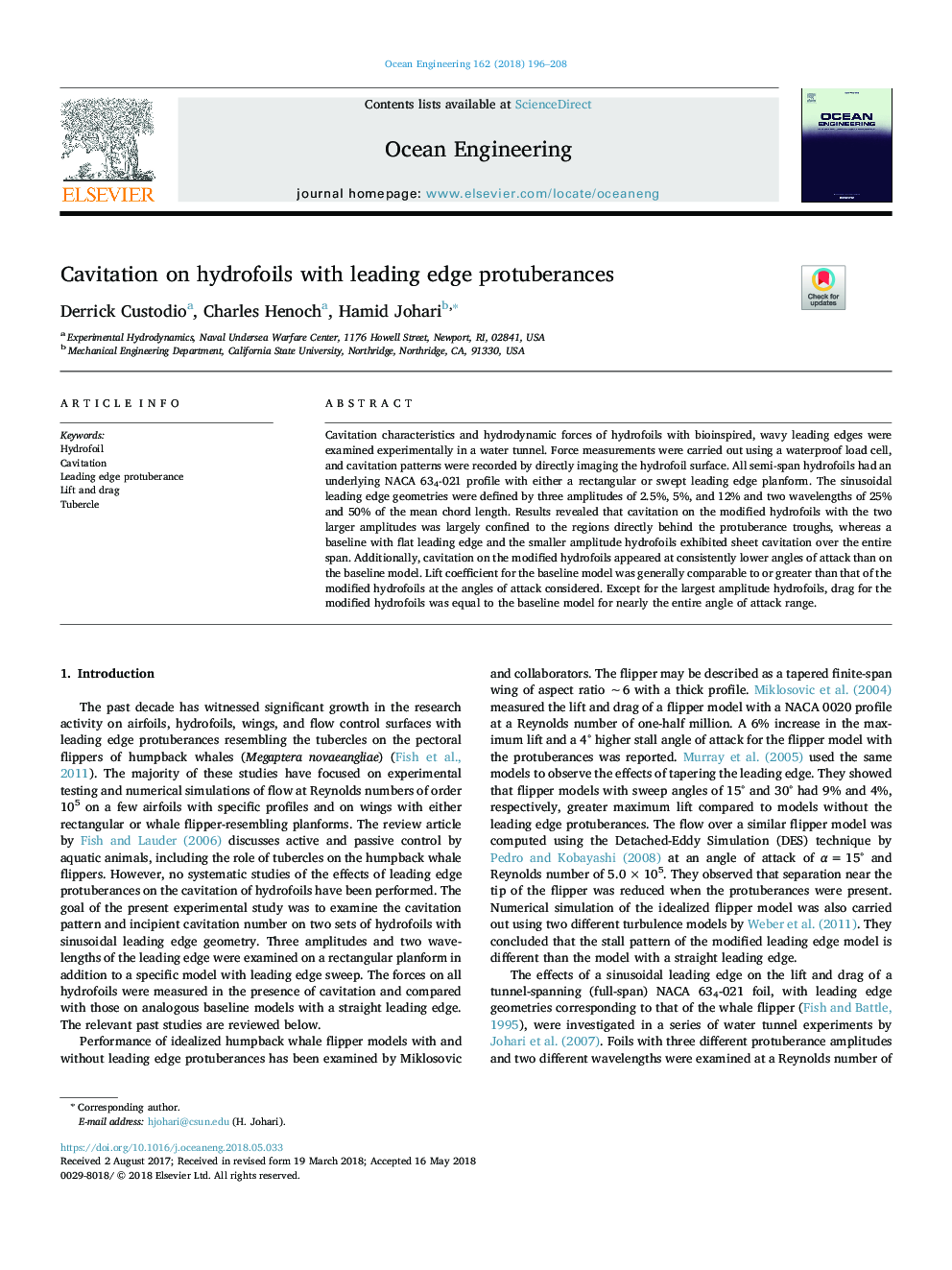| Article ID | Journal | Published Year | Pages | File Type |
|---|---|---|---|---|
| 8062111 | Ocean Engineering | 2018 | 13 Pages |
Abstract
Cavitation characteristics and hydrodynamic forces of hydrofoils with bioinspired, wavy leading edges were examined experimentally in a water tunnel. Force measurements were carried out using a waterproof load cell, and cavitation patterns were recorded by directly imaging the hydrofoil surface. All semi-span hydrofoils had an underlying NACA 634-021 profile with either a rectangular or swept leading edge planform. The sinusoidal leading edge geometries were defined by three amplitudes of 2.5%, 5%, and 12% and two wavelengths of 25% and 50% of the mean chord length. Results revealed that cavitation on the modified hydrofoils with the two larger amplitudes was largely confined to the regions directly behind the protuberance troughs, whereas a baseline with flat leading edge and the smaller amplitude hydrofoils exhibited sheet cavitation over the entire span. Additionally, cavitation on the modified hydrofoils appeared at consistently lower angles of attack than on the baseline model. Lift coefficient for the baseline model was generally comparable to or greater than that of the modified hydrofoils at the angles of attack considered. Except for the largest amplitude hydrofoils, drag for the modified hydrofoils was equal to the baseline model for nearly the entire angle of attack range.
Related Topics
Physical Sciences and Engineering
Engineering
Ocean Engineering
Authors
Derrick Custodio, Charles Henoch, Hamid Johari,
